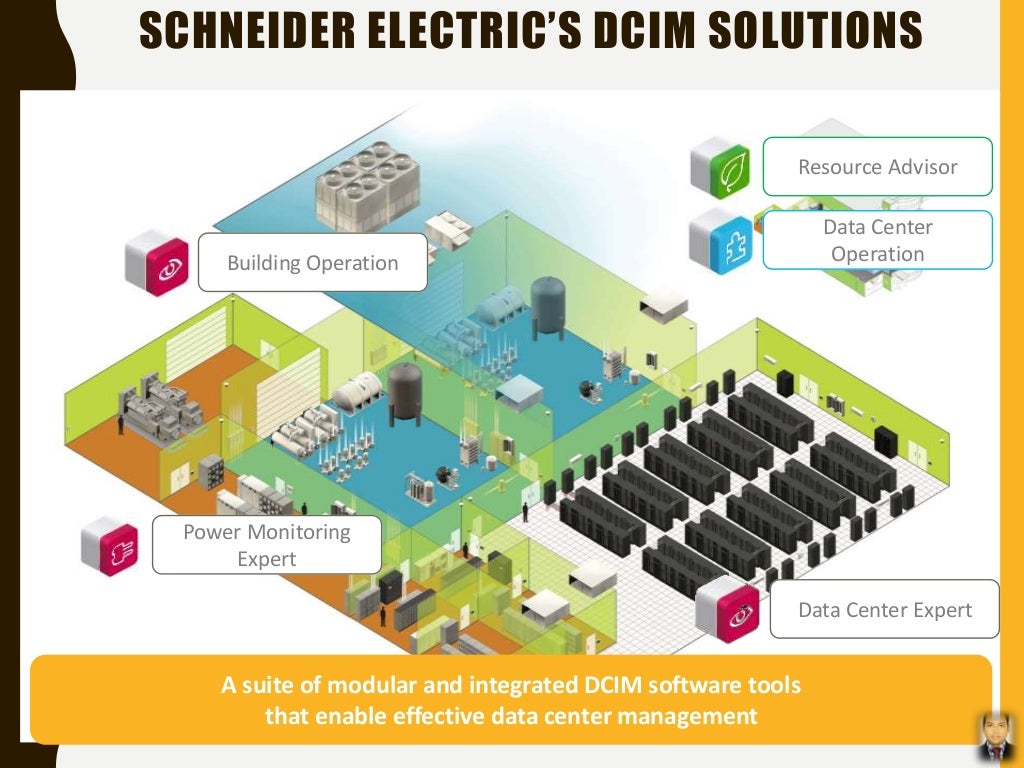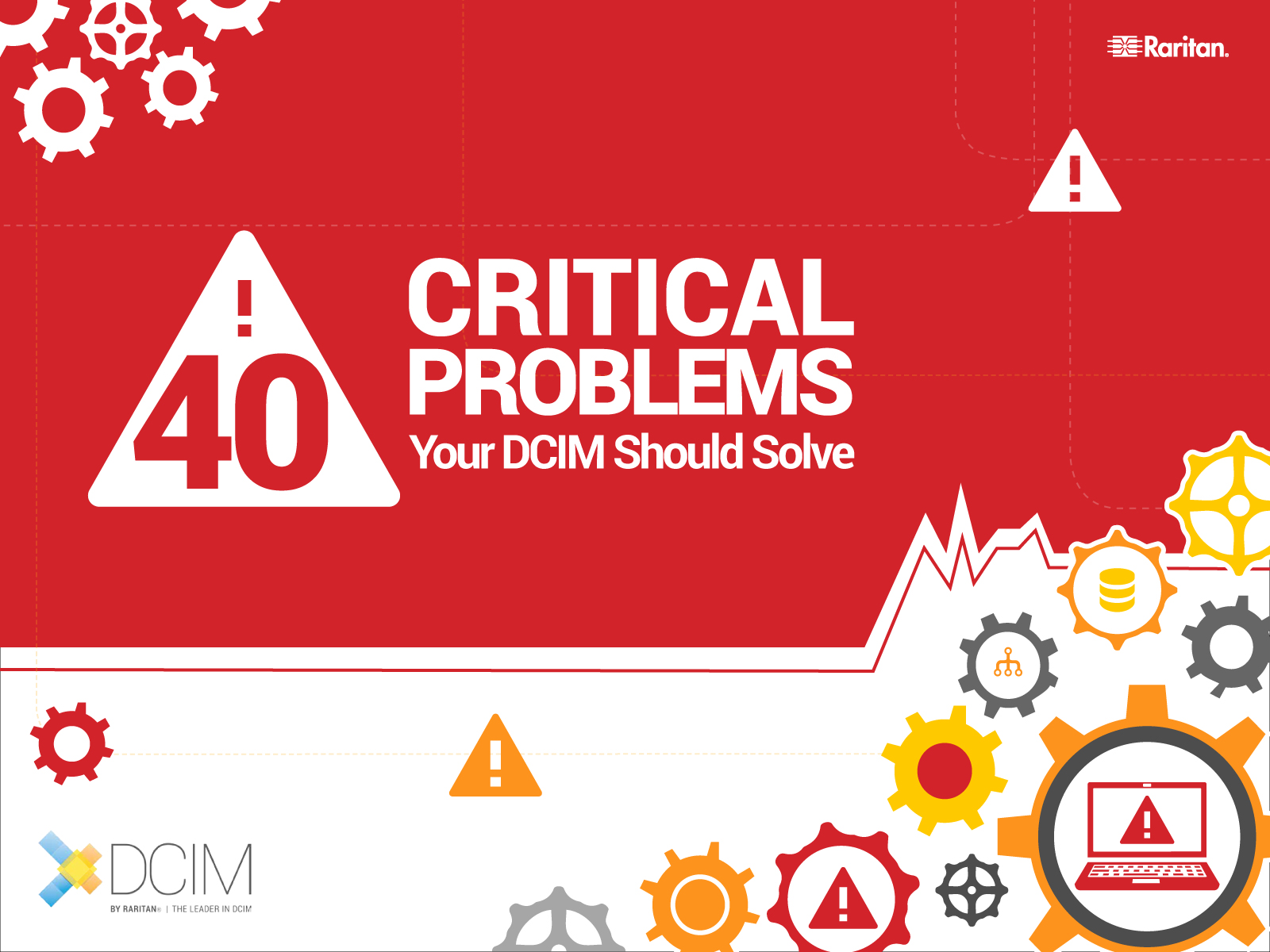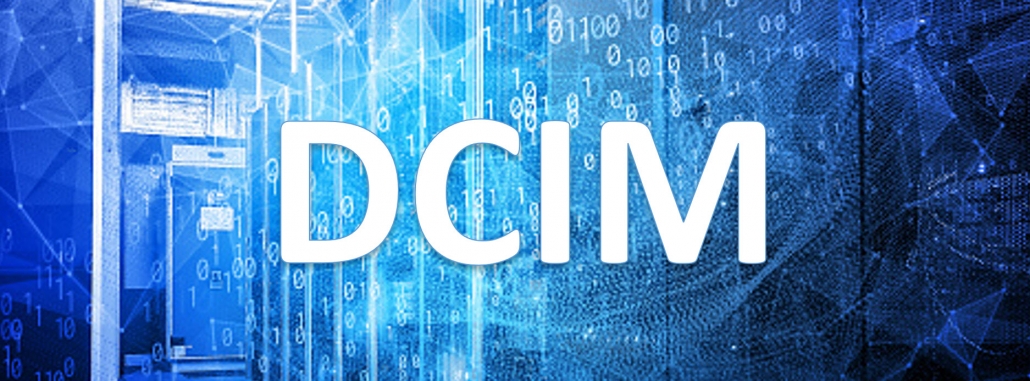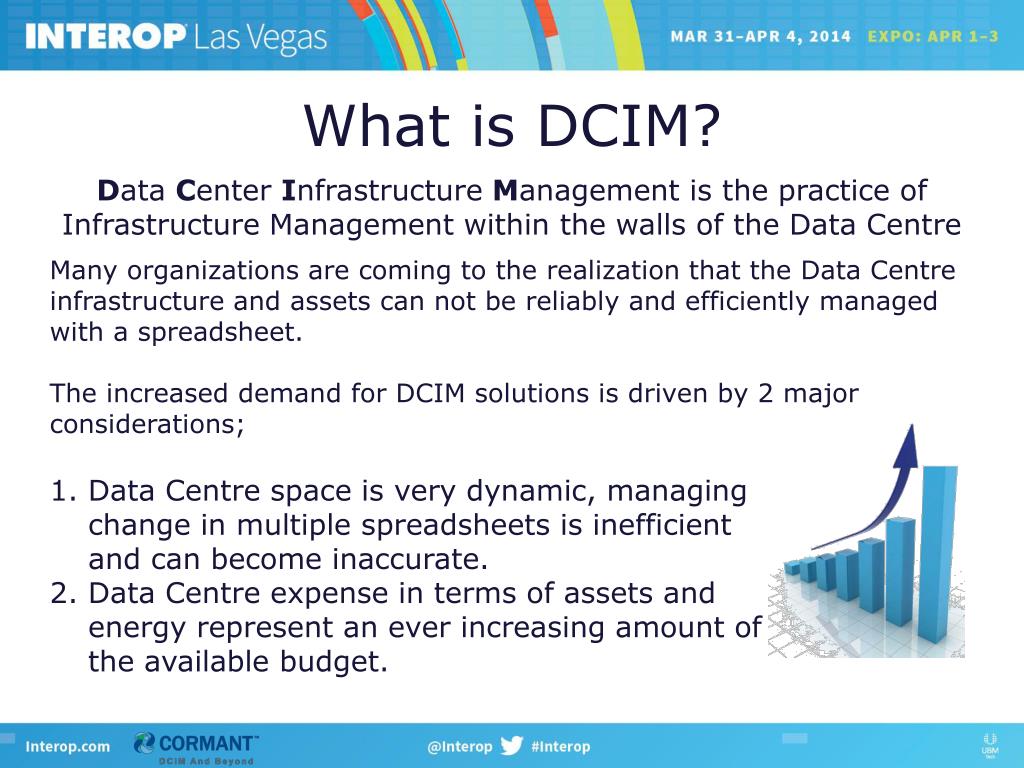What is DCIM and How Does it Benefit from Cloud Integration?
Data Center Infrastructure Management (DCIM) is a comprehensive approach to monitoring, managing, and optimizing data center resources, including power, cooling, networking, and storage. DCIM tools provide real-time visibility, analytics, and automation capabilities, enabling data center operators to improve efficiency, reduce costs, and enhance reliability. By integrating DCIM with the cloud, organizations can unlock additional benefits, such as enhanced scalability, accessibility, and cost-effectiveness. Cloud-based DCIM solutions allow for seamless expansion of data center resources, enabling organizations to scale up or down as needed without the need for significant capital investments. Moreover, cloud DCIM provides secure remote access, enabling data center teams to monitor and manage their infrastructure from anywhere, at any time.
Cloud DCIM also offers a more cost-effective approach to data center management, as it eliminates the need for on-premises hardware, software, and maintenance costs. Instead, organizations can leverage the economies of scale provided by cloud service providers, paying only for the resources they consume. This shift from capital expenditures (CapEx) to operational expenditures (OpEx) can help organizations better align their IT spending with their business needs and improve their financial flexibility.

How to Transition Your Existing DCIM to Cloud-Based Solutions
Transitioning from traditional DCIM to cloud-based solutions can be a complex process, but it offers numerous benefits in terms of scalability, accessibility, and cost-effectiveness. Here’s a step-by-step guide to help you make a smooth transition:
Step 1: Assess Your Needs
The first step in transitioning to cloud-based DCIM is to assess your organization’s needs and requirements. Consider factors such as the size and complexity of your data center, your current DCIM capabilities, and your future growth plans. This assessment will help you determine the right cloud DCIM solution for your organization and ensure that it meets your current and future needs.
Step 2: Select a Provider
Once you have assessed your needs, the next step is to select a cloud DCIM provider. Look for a provider that offers a robust, scalable, and secure solution that meets your requirements. Consider factors such as the provider’s reputation, experience, and track record in the industry. You should also consider the provider’s pricing model, support services, and integration capabilities with your existing systems and tools.
Step 3: Develop a Migration Strategy
Once you have selected a provider, the next step is to develop a migration strategy. This strategy should outline the steps involved in migrating your data and systems to the cloud, including data backup and recovery, system testing, and user training. You should also consider any potential risks and challenges associated with the migration and develop a plan to mitigate them.
Step 4: Ensure Data Security
Data security is a critical consideration when transitioning to cloud-based DCIM. You should ensure that your cloud provider has robust security measures in place, such as data encryption, multi-factor authentication, and regular audits. You should also develop a data backup and recovery plan to ensure that your data is protected in the event of a disaster or data loss.
Step 5: Monitor and Optimize
Once you have migrated to cloud-based DCIM, it’s essential to monitor and optimize your data center performance continuously. Use the analytics and reporting capabilities of your cloud DCIM solution to identify trends, patterns, and areas for improvement. You should also establish key performance indicators (KPIs) and regularly review them to ensure that your data center is operating at optimal levels.

Top Cloud DCIM Solutions in the Market
Center infrastructure management (DCIM) in the cloud is a rapidly growing market, with several vendors offering innovative and feature-rich solutions. Here are some of the top cloud DCIM solutions in the market:
Schneider Electric’s StruxureWare
Schneider Electric’s StruxureWare is a comprehensive cloud DCIM solution that offers features such as real-time monitoring, asset management, and energy efficiency analytics. The solution is highly scalable and can be customized to meet the specific needs of different data center environments. StruxureWare has received positive user reviews, with users praising its ease of use, robust features, and excellent customer support.
Sunbird DCIM
Sunbird DCIM is a cloud-based data center infrastructure management solution that offers features such as real-time monitoring, capacity planning, and energy efficiency analytics. The solution is highly customizable and can be integrated with other data center management tools and systems. Sunbird DCIM has received positive user reviews, with users praising its intuitive interface, robust features, and excellent customer support.
Nlyte Software
Nlyte Software is a cloud-based DCIM solution that offers features such as real-time monitoring, asset management, and capacity planning. The solution is highly scalable and can be customized to meet the specific needs of different data center environments. Nlyte Software has received positive user reviews, with users praising its ease of use, robust features, and excellent customer support.
RF Code
RF Code is a cloud-based DCIM solution that offers features such as real-time monitoring, asset management, and energy efficiency analytics. The solution is highly customizable and can be integrated with other data center management tools and systems. RF Code has received positive user reviews, with users praising its ease of use, robust features, and excellent customer support.
Cormant-CS
Cormant-CS is a cloud-based DCIM solution that offers features such as real-time monitoring, asset management, and capacity planning. The solution is highly scalable and can be customized to meet the specific needs of different data center environments. Cormant-CS has received positive user reviews, with users praising its ease of use, robust features, and excellent customer support.
EcoStruxure IT for Data Centers
EcoStruxure IT for Data Centers is a cloud-based DCIM solution that offers features such as real-time monitoring, asset management, and energy efficiency analytics. The solution is highly scalable and can be customized to meet the specific needs of different data center environments. EcoStruxure IT for Data Centers has received positive user reviews, with users praising its ease of use, robust features, and excellent customer support.

The Role of Artificial Intelligence and Machine Learning in Cloud DCIM
Center infrastructure management (DCIM) in the cloud is increasingly leveraging artificial intelligence (AI) and machine learning (ML) to improve data analysis, predictive maintenance, and energy efficiency. These advanced technologies are enabling data center operators to make more informed decisions, reduce costs, and improve overall performance.
Improved Data Analysis
AI and ML algorithms can analyze vast amounts of data generated by data center infrastructure, including power usage, temperature, and humidity. By identifying patterns and trends in this data, operators can optimize resource allocation, identify potential issues before they become critical, and make data-driven decisions to improve efficiency and reduce costs.
Predictive Maintenance
Predictive maintenance is a proactive approach to maintaining data center infrastructure, using AI and ML to identify potential issues before they occur. By analyzing historical data and identifying patterns, these algorithms can predict when components are likely to fail and schedule maintenance accordingly. This approach reduces downtime, improves reliability, and reduces maintenance costs.
Energy Efficiency
AI and ML can also improve energy efficiency in data centers by optimizing power usage and cooling. By analyzing data on power consumption and temperature, these algorithms can identify inefficiencies and suggest ways to reduce energy usage. For example, they may suggest adjusting cooling temperatures, optimizing server placement, or implementing power management policies.
Real-World Use Cases and Success Stories
Many data center operators are already seeing the benefits of AI and ML in their cloud DCIM systems. For example, Microsoft has implemented an AI-powered cooling system in its data centers, which has resulted in a 15% reduction in cooling energy usage. Similarly, Google has used ML to optimize its data center infrastructure, resulting in a 40% reduction in cooling costs and a 15% reduction in overall energy usage.
Conclusion
AI and ML are transforming center infrastructure management (DCIM) in the cloud, enabling data center operators to make more informed decisions, reduce costs, and improve overall performance. By leveraging these advanced technologies, operators can optimize resource allocation, improve energy efficiency, and reduce downtime. With real-world use cases and success stories demonstrating the benefits of AI and ML in cloud DCIM, it’s clear that these technologies are here to stay.

Addressing Security Concerns in Cloud DCIM
Center infrastructure management (DCIM) in the cloud offers numerous benefits, including scalability, accessibility, and cost-effectiveness. However, security remains a top concern for many organizations. By understanding the common security challenges and implementing best practices, organizations can mitigate risks and ensure the secure operation of their cloud DCIM systems.
Common Security Challenges
Cloud DCIM systems face several security challenges, including data breaches, unauthorized access, and data loss. These risks can be exacerbated by the complexity of cloud environments, which often involve multiple vendors and technologies. Additionally, the distributed nature of cloud infrastructure can make it difficult to monitor and manage security across all components.
Best Practices for Mitigating Risks
To mitigate these risks, organizations should implement a variety of best practices, including:
- Data Encryption: Encrypting data both in transit and at rest can help protect against data breaches and unauthorized access.
- Multi-Factor Authentication: Implementing multi-factor authentication can help ensure that only authorized users have access to the cloud DCIM system.
- Regular Audits: Regularly auditing the cloud DCIM system can help identify potential security vulnerabilities and ensure that security policies are being followed.
- Security Policies: Developing and implementing comprehensive security policies can help ensure that all users and vendors are aware of their responsibilities and adhere to best practices.
Real-World Case Studies and Expert Insights
Many organizations have successfully implemented cloud DCIM systems while addressing security concerns. For example, a large financial institution implemented a cloud DCIM system to manage its data center infrastructure, using data encryption, multi-factor authentication, and regular audits to ensure security. By following best practices and working closely with its cloud provider, the organization was able to mitigate security risks and improve overall data center management.
Conclusion
Security remains a top concern for organizations implementing cloud DCIM systems. However, by understanding the common security challenges and implementing best practices, organizations can mitigate risks and ensure the secure operation of their cloud DCIM systems. By drawing from real-world case studies and expert insights, organizations can develop and implement comprehensive security policies that address the unique needs of their cloud DCIM systems.

The Future of Cloud DCIM: Trends and Predictions
Center infrastructure management (DCIM) in the cloud is a rapidly evolving field, with new trends and technologies emerging all the time. By understanding these trends and how they may impact data center management, organizations can stay ahead of the curve and ensure that their cloud DCIM systems are optimized for performance, security, and cost-effectiveness.
Edge Computing
Edge computing is a distributed computing paradigm that brings computation and data storage closer to the location where it is needed, thereby reducing latency and bandwidth use. By integrating edge computing with cloud DCIM, organizations can improve performance and reduce the need for costly data center infrastructure upgrades.
IoT Integration
The Internet of Things (IoT) is a network of interconnected devices that can collect and share data. By integrating IoT devices with cloud DCIM, organizations can gain real-time insights into data center performance, identify potential issues before they become critical, and optimize energy efficiency.
Containerization
Containerization is a lightweight virtualization technology that allows applications to be packaged with their dependencies and run in any environment. By using containerization in cloud DCIM, organizations can improve scalability, reduce deployment times, and enhance security.
Real-World Use Cases and Success Stories
Many organizations have already begun to adopt these emerging trends in cloud DCIM. For example, a large technology company implemented edge computing in its cloud DCIM system to improve performance and reduce latency. By deploying edge computing devices at the edge of the network, the company was able to reduce data center infrastructure costs and improve overall system performance.
Conclusion
The future of cloud DCIM is bright, with emerging trends such as edge computing, IoT integration, and containerization poised to revolutionize data center management. By understanding these trends and how they may impact their cloud DCIM systems, organizations can stay ahead of the curve and ensure that they are optimized for performance, security, and cost-effectiveness. By drawing from real-world use cases and success stories, organizations can develop and implement innovative and creative cloud DCIM strategies that provide value and usefulness to their stakeholders.

Implementing a Successful Cloud DCIM Strategy: Best Practices and Case Studies
Center infrastructure management (DCIM) in the cloud is a powerful tool for monitoring, managing, and optimizing data center resources. By implementing a successful cloud DCIM strategy, organizations can improve scalability, accessibility, and cost-effectiveness. In this article, we will discuss best practices for implementing a successful cloud DCIM strategy, drawing from real-world case studies and expert insights. We will also discuss common pitfalls and how to avoid them.
Best Practices for Implementing a Successful Cloud DCIM Strategy
1. Assess Your Needs: Before implementing a cloud DCIM solution, it is essential to assess your organization’s needs. Identify the key performance indicators (KPIs) that are most important to your organization, such as energy efficiency, uptime, and capacity utilization. This will help you select a cloud DCIM solution that meets your specific needs.
2. Select a Provider: Once you have assessed your needs, it is time to select a cloud DCIM provider. Look for a provider that offers a solution that is scalable, secure, and easy to use. Consider the provider’s reputation, experience, and customer support. Read user reviews and case studies to get a sense of the provider’s strengths and weaknesses.
3. Migration Strategies: When transitioning from traditional DCIM to cloud-based DCIM, it is essential to have a clear migration strategy. This may involve migrating data and applications in stages or all at once. It is important to ensure that the migration is seamless and does not disrupt data center operations.
4. Data Security: Data security is a critical concern in cloud DCIM. Ensure that the cloud DCIM solution you select has robust security features, such as data encryption, multi-factor authentication, and regular audits. It is also important to have a disaster recovery plan in place in case of data loss or breaches.
Real-World Case Studies and Expert Insights
Many organizations have successfully implemented cloud DCIM strategies. For example, a large financial institution implemented a cloud DCIM solution to improve energy efficiency and reduce costs. By using the cloud DCIM solution to monitor and optimize data center performance, the financial institution was able to reduce energy consumption by 20% and save millions of dollars in energy costs.
Expert insights also suggest that cloud DCIM can help organizations improve scalability and accessibility. By using a cloud-based solution, organizations can easily scale up or down as needed, without the need for costly infrastructure upgrades. Cloud DCIM also provides real-time access to data center performance metrics, allowing organizations to make informed decisions and respond quickly to changing conditions.
Common Pitfalls and How to Avoid Them
When implementing a cloud DCIM strategy, there are several common pitfalls to avoid. These include failing to assess needs, selecting the wrong provider, and neglecting data security. To avoid these pitfalls, it is important to carefully assess your organization’s needs, select a reputable and experienced provider, and ensure that data security is a top priority.
Another common pitfall is failing to plan for migration. When transitioning from traditional DCIM to cloud-based DCIM, it is essential to have a clear migration strategy in place. This may involve migrating data and applications in stages or all at once. It is important to ensure that the migration is seamless and does not disrupt data center operations.
Finally, it is important to regularly review and update your cloud DCIM strategy. Data center performance metrics and best practices are constantly evolving, and it is essential to stay up-to-date to ensure that your cloud DCIM solution is optimized for performance, security, and cost-effectiveness.

Maximizing ROI with Center Infrastructure Management (DCIM) in the Cloud: Cost Analysis and Metrics
Center infrastructure management (DCIM) in the cloud offers numerous benefits, including improved scalability, accessibility, and cost-effectiveness. However, to fully realize these benefits, it is essential to measure the return on investment (ROI) of cloud DCIM. In this article, we will discuss how to measure the ROI of cloud DCIM, including key performance indicators (KPIs) and cost-benefit analysis. We will also provide tips for optimizing costs and maximizing the value of cloud DCIM.
Measuring the ROI of Cloud DCIM
To measure the ROI of cloud DCIM, it is important to first establish clear KPIs. These may include energy efficiency, uptime, capacity utilization, and cost savings. Once KPIs are established, it is possible to conduct a cost-benefit analysis to determine the ROI of cloud DCIM. This involves calculating the total cost of ownership (TCO) of the solution, including hardware, software, and maintenance costs, and comparing it to the expected benefits, such as reduced energy consumption, improved uptime, and increased capacity utilization.
When conducting a cost-benefit analysis, it is important to consider both short-term and long-term costs and benefits. Short-term costs may include the cost of migrating to a cloud DCIM solution, while long-term benefits may include improved scalability and reduced maintenance costs. By taking a holistic view of costs and benefits, it is possible to accurately measure the ROI of cloud DCIM.
Optimizing Costs and Maximizing Value
To optimize costs and maximize the value of cloud DCIM, it is important to regularly review and update the solution. This may involve identifying areas where costs can be reduced, such as by consolidating servers or optimizing energy consumption. It is also important to ensure that the cloud DCIM solution is aligned with the organization’s changing needs and goals. By regularly reviewing and updating the solution, organizations can ensure that they are getting the most value from their investment in cloud DCIM.
Another way to optimize costs and maximize the value of cloud DCIM is to leverage automation and machine learning. By using automation to perform routine tasks, such as monitoring and reporting, organizations can reduce labor costs and improve efficiency. Machine learning can also be used to analyze data and identify trends, enabling organizations to make data-driven decisions and optimize performance.
Conclusion
Center infrastructure management (DCIM) in the cloud offers numerous benefits, including improved scalability, accessibility, and cost-effectiveness. To fully realize these benefits, it is essential to measure the ROI of cloud DCIM and optimize costs. By establishing clear KPIs, conducting a cost-benefit analysis, and regularly reviewing and updating the solution, organizations can maximize the value of their investment in cloud DCIM and achieve long-term success.

